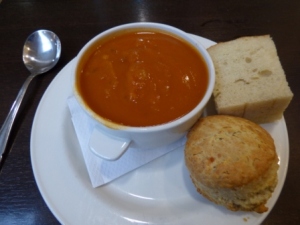Insects In Unexpected Places
My wildlife adventures this week turned away from the typical ventures at nature reserves, towards indoor exploration. Matt and I spent a day with my family at the Science Museum and then the V&A Museum, to celebrate a birthday. I am always a big fan of museums as they are such excellent places for learning – whether it be about the natural world, the lives of humans long ago or otherwise. I wasn’t expecting much, if any, nature in this trip, after all we weren’t at the Natural History Museum. But as the title suggests, I was pleasantly surprised.
Before any insects, we found the DNA model made by Crick and Watson (NB: I feel more should have been said about Franklin in the description). After lots of button-pushing and pointing at shiny things by my nephew (a sign of how the rest of the day would turn out – he loves buttons!), we then stumbled across some bees! From what I remember, the one in the middle is robotic bee whose flight is based on the study of honeybees.
Skip ahead through galleries about atmosphere, household goods and wooden doors, plus some delicious lunch (surrounded by very loud children!), and we get to the Glass Gallery in the V&A Museum. My nephew amused himself, and the family, by running around laughing and looking for buttons to push or stairs to climb. In between being amused by his antics, I took the opportunity to look at the various objects on display. There was plenty of wildlife to be found – as ever, artists being inspired by nature. I think my favourites are the first three – jellyfish, vases and the branch, though I was awed to see work from mosaic tiles from 1-2C AD!
I was intrigued by whether I could find any insects among the collection. There were flowers, trees and birds a-plenty, but I felt certain there must be some insects in there, even if only the usual butterflies found in artwork. I asked the gallery attendant / volunteer, but they didn’t know. So what next? Well, obviously attempt to examine every object in there for insects – a challenge and a half, but I was going to go around and browse anyway, so why not make said browsing a bit more detailed? I was rewarded for my efforts, and many times over. Whilst the insects weren’t normally the main feature on a glassware (or pottery), nonetheless, they were there. Also, a cute snail too.
All in all, a lovely day out with the surprising, but pleasant, appearance of insects and nature within the galleries.




































































































































































































































































































































